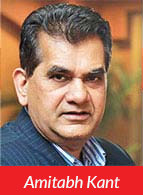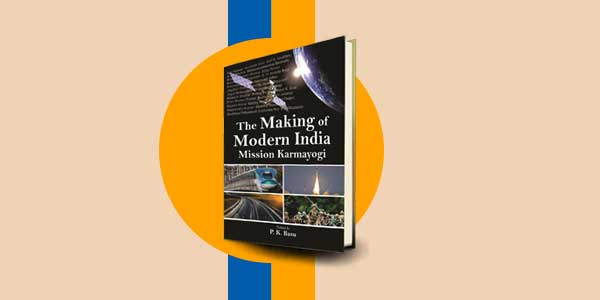 IF the North and North-East have extreme conditions due to the mountainous terrain, districts in the central Indian forest have a distinct set of equally serious challenges. Many of these districts have been at the receiving end of a long drawn out insurgency crisis that India has faced over decades.
IF the North and North-East have extreme conditions due to the mountainous terrain, districts in the central Indian forest have a distinct set of equally serious challenges. Many of these districts have been at the receiving end of a long drawn out insurgency crisis that India has faced over decades.
Two such districts which I had the opportunity to visit were Bijapur and Dantewada in Chhattisgarh. The former is an erstwhile part of the latter district, which was split into two due to administrative reasons. Dantewada is the most densely forested district in the state with almost 35 per cent of its total area under forest cover. The district has also been at the heart of the infamous red corridor for years, experiencing armed face-offs between left wing extremist groups and the local authorities. The forest cover combined with the insurgency make Dantewada geographically remote as well as sociopolitically unstable. This has historically hampered the execution of multiple welfare schemes in the region.
The region has the zeal to make significant progress which I was able to witness first hand in the summer of 2018. It was a truly inspiring vision that met my eyes, where the spirit of the people trumped their adversity. Rapid strides were in progress in sectors across education, health and employment. I was very impressed by the Shri Atal Bihari Vajpayee Education City in the district which housed 18 educational institutions.
By making education far more easily accessible to the masses, the Education City has successfully brought down insurgency rates in the districts, encouraging the youth to give up weapons and take to books and pens. The tribal women have been economically empowered and run auto rickshaws in the district. The development narrative in Dantewada has been augmented by the rollout of the Aspirational Districts Programme. This is especially visible with respect to the health and education indicators. Adjacent to Dantewada, Bijapur is another LWE aspirational district. When I visited the district in 2018 along with Prime Minister Narendra Modi for the launch of the SBI Mudra loans branch, the district was absolutely unbanked and under financed. Within two years, in the month of July in 2020, Bijapur had topped the monthly delta rankings for 112 Aspirational Districts, an integral parameter of which is financial inclusion. Bijapur has also witnessed substantial improvement in all other sectors health and nutrition, education, basic infrastructure and skill development.
Launched by Prime Minister Narendra Modi in January 2018, the Aspirational Districts Programme (ADP) seeks to improve socioeconomic outcomes by reimagining governance, vesting greater ownership and accountability in the district administration, facilitating convergence and collaboration among stakeholders, tracking of performance indicators on a real-time basis as well as engaging citizens to contribute to the development process. Since its launch, all 112 underdeveloped districts included in the programme have significantly improved their performance. While some have surpassed the state averages on key indicators, many Aspirational Districts are now the best performing of all districts in their state. The Prime Minister changed the development narrative by referring to backward districts as ‘aspirational’ instead of ‘backward’. By doing so, he ensured that no district in the country was left behind in the journey towards development for all.
Given India’s size and diversity, it is crucial that states and districts have a greater say in their own development. This is the crux of competitive federalism. Moreover, local challenges differ significantly across the country. State and local governments are therefore best positioned to recognise their development challenges, and design customised policy interventions. This move is grounded in evidence which shows that devolution of resources and responsibilities to lower levels of government can lead to better governance of facilities in the public sector, higher use of public services and greater achievement of desired socio-economic outcomes.
The ADP is based on the central tenets of Convergence (of central and state schemes), Collaboration (of central, state level ‘Prabhari Officers and District Collectors), and Competition among districts. This is mapped through monthly delta rankings (‘3 Cs’ Approach).
The Programme is driven by a mass movement (‘Jan Andolan’). Aligned with this broad framework, districtlevel vision and action plans have been drawn up. These plans are based on a thorough analysis of the strengths and weaknesses of every district. To empower government officials who are closest to the ground to make decisions without having to wait for authorities at higher levels, District Collectors have been designated as the focal points of this programme. They play a critical role in implementing and monitoring initiatives, based on the continuously evolving reality of their districts as captured in a dashboard.
Senior officials from the central government have been appointed as Prabhari Officers to act as a bridge between the central and state governments. A committee including the administrative heads of key central government ministries and departments has also been created to refine existing programmes and resolve any issues flagged by the districts. Collaboration between all levels of government is enabling existing schemes to be channelled more effectively towards this programme. In fact, instead of making a dedicated financial allocation for the ADP, the Programme has focussed on improving governance and makes use of existing resources more smartly and achieving better outcomes for the same amount of money.
Additionally, working collaboratively has enabled innovative service delivery approaches currently limited to one or a few districts in the countryto be replicated in other areas. For instance, the smart classroom initiative being implemented in Banka, Bihar to improve student learning outcomes is being replicated in Aspirational Districts across Bihar, Arunachal Pradesh, Odisha and Jharkhand. In Narayanpur, Chhattisgarh motorbike ambulances are being deployed for bringing pregnant women to the nearest health centre in time for delivery. The ADP model emphasises on the documentation, dissemination and replication of all such innovative and impactful practices.
Further, by opening its door to the private sector, philanthropic organisations and technical knowledge partners, the ADP is changing the deeply entrenched popular perception that development is, to a large extent, the prerogative of the government alone. These partnerships are helping to infuse the Programme with new ideas, and acting as force multipliers on outcomes.
















